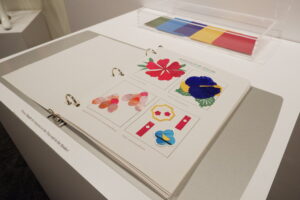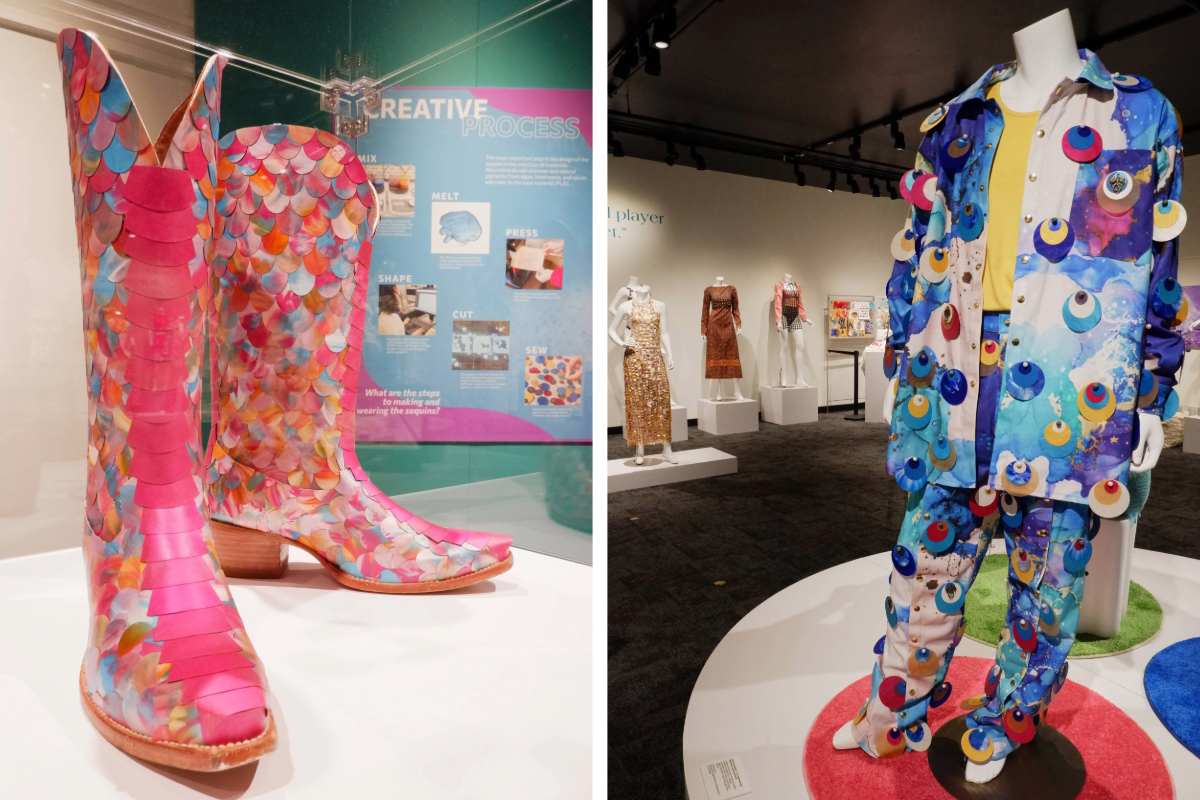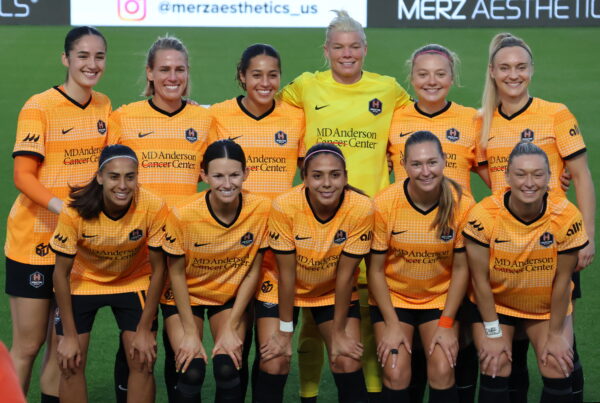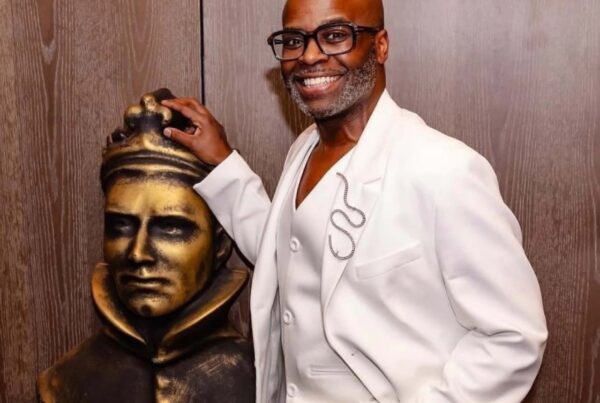Conversations about sustainability and the environment often focus on things like electric vehicles and alternatives to fossil fuels. But 342 million barrels of petroleum are used each year in the production of polyester, nylon and other textiles, according to University of Texas associate professor and fashion designer Jessica Ciarla.

Jessica Ciarla
Ciarla, along with her students and other collaborators, hopes to make an impact by introducing sequins that are made of plastic derived from agricultural waste rather than petroleum.
Ciarla showed Texas Standard around the exhibit “Particles of Color,” where these sustainable sequins are on display in a myriad of garment styles. The exhibit was co-curated by assistant professor Gail Chovan and features contributions from UT Textiles and Apparel students and professors and local designers.
You can see the sequins adorning everything from cowboy boots to dresses, jean jackets, jewelry and more. The sequins are durable enough to be worn on all kinds of garments yet can biodegrade in commercial composting facilities.
The exhibit also informs patrons how the sequins are created and shows off some of the raw materials. Ciarla and her students made the sequins from a plant-based plastic called polylactic acid and tinted the material with nontoxic food and mica powders. The team makes square sheets of the material and laser cuts the sequins in various sizes and colors. Any waste can be melted down and reused.

Sequins on display at the “Particles of Color” exhibit.
Patrick M. Davis / Texas Standard
But Ciarla’s fashion career didn’t begin with a focus on sustainability. She said motherhood made her consider the fashion industry’s impact and ultimately changed her trajectory.
“I lived in New York for eight years and had a very kind of commercial, capitalist perspective of fashion,” she said. “But when I had my first child, my whole shift in identity changed, where I took a look at what am I doing, what am I contributing, and how is this going to make the world a better place for my kids?”
That shift in identity inspired Ciarla to explore sustainable fashion and eventually led to the research she’s doing now at UT Austin. Ciarla collaborates with other researchers, scientists and fashion brands from around the world with the hope of making long-term, sustainable change.
“I’ve been really diving into this research in terms of the impact that we’ve had on our planet and where we’re headed,” she said. “And what are the choices that we can make to make a shift and to hopefully solve that problem.”
The choice to develop a sustainable sequin was bolstered by Ciarla’s 2019 President’s Award for Global Learning. It was during that phase of research that she partnered with scientists to identify landfill waste that could be utilized as a textile. They landed on polylactic acid because it’s readily available, scalable and can stand in for petroleum-based plastics.
“This is the science behind fashion design,” Ciarla said. “And this is how we can work together to create an even more responsible product for the consumer – one that can maybe solve a problem, too.”
“Particles of Color” runs through April 2025 on the fourth floor of the Texas Science and Natural History Museum at UT Austin.














